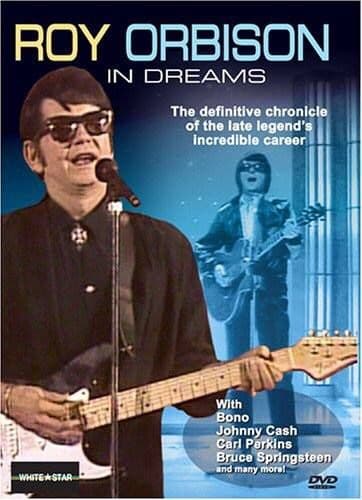
✨ The Melancholy Dreamer: A Timeless Ode to Unseen Love
There are songs that simply pass through the decades, and then there are those that become woven into the very fabric of popular music, echoing across generations like a shared, wistful memory. Roy Orbison’s poignant cover of “All I Have to Do Is Dream” is one such treasure, a track that, while not his original, he made distinctly his own, bathing it in his signature blend of vulnerability and ethereal grace. The original, of course, belonged to the impeccable harmonies of The Everly Brothers in 1958, who took it to the peak of success, a rare single that topped the US charts across the Pop, R&B, and Country genres simultaneously—a testament to its universal appeal. Orbison, the ‘Big O,’ offered his interpretation on his highly influential 1963 album, In Dreams, a record that helped solidify his unique position as a 60s innovator, moving past the rockabilly of his early career into a more operatic, sophisticated pop sound.
For those of us who came of age with the golden sounds of the late 50s and early 60s, this song evokes a powerful wave of nostalgia, transporting us back to a simpler time of innocence and yearning. The meaning of “All I Have to Do Is Dream” is deceptively simple: it is the purest expression of unrequited or absent love, where the singer finds solace and complete fulfillment only in his sleep. His beloved is unattainable in the waking world—perhaps she is unaware of his feelings, or perhaps distance or circumstance keeps them apart. The lyrics paint a beautiful, almost heartbreaking picture: “When I want you in my arms, when I want you and all your charms, whenever I want you, all I have to do is dream.” It’s a resignation, a quiet acceptance that the perfect union—the tasting of her “lips of wine,” the holding of her tight—can only happen in the sanctuary of his mind.
The story behind the original hit lies with the brilliant husband-and-wife songwriting team, Felice and Boudleaux Bryant, who also penned other Everly classics like “Bye Bye Love.” It’s a marvelous piece of trivia that Boudleaux was, in fact, the man Felice claimed to have dreamed about years before she ever met him, giving the song a touching, almost prophetic layer of romance. Roy Orbison’s decision to cover it for his In Dreams album, which followed his breakout hits like “Only The Lonely,” was a masterful one. His unique vocal power—that effortless, heart-stopping falsetto that could shatter glass and break hearts in the same breath—added a layer of depth and exquisite sorrow that differed from the Everlys’ close-knit, lighter harmonies.
Orbison was known for his dark, romantic ballads and his enigmatic stage presence—the trademark black clothes and sunglasses that hid his emotions, making his vocal expression all the more potent. His rendition of “All I Have to Do Is Dream,” while not released as a major chart single for him in the US at the time, became an integral part of his legacy and a fan favorite, perfectly fitting the romantic, yet tragic, persona he cultivated. It’s a song that speaks volumes to anyone who has ever loved someone they couldn’t have, reminding us that sometimes, the sweetest life is the one we keep just behind our closed eyelids. It’s a moment of reflection, a gentle sigh in the whirlwind of memory, and one of the finest covers to grace the early 60s musical landscape.